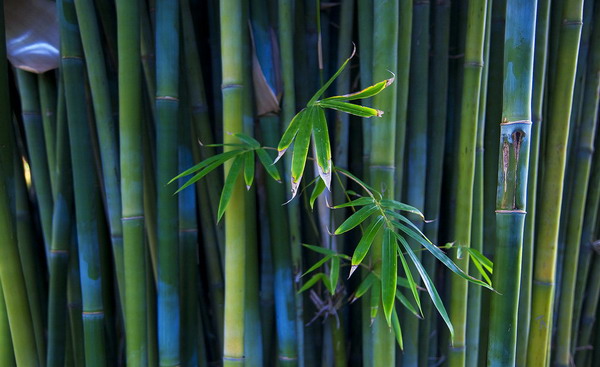RESOURCES
Source: Chinaculture.org

When it comes to the symbol of Chinese culture, the images of giant pandas may capture the foreigners' imagination. However, many may ignore the fact that bamboo, the staple food of the national treasure, also has a far-reaching influence on the Chinese people.
The history of Chinese people planting and using bamboo can be traced back to as far as 7,000 years. As early as the Shang Dynasty (16th-11th century BC), bamboo was being used in various aspects of ancient Chinese people's daily lives. It was used for food, clothing, housing, transportation, music instruments and even weapons.
Su Shi, also known as Su Dongpo, was a Chinese leading poet, painter and calligrapher of the Song dynasty (AD 960-1279). He said in his poet: "I would rather live without meat than without bamboo. Without meat, I will be thinner. Without bamboo, I will be coarse."
Let's take a look at the role of bamboo in China.
Chinese characters

Bamboo formed the earliest ties with Chinese characters, which can be traced back to the New Stone Age 6,000 years ago. The pictographic symbol for "bamboo" was found on the pottery unearthed in the Yangshao cultural relics of Banpo Village, Xi'an in 1954, and the symbol was also discovered in oracle bone inscriptions and inscriptions on ancient bronze objects. Between the Warring States Period (475-221 BC) to the Jin Dynasty (265-420 AD), the people wrote on "bamboo slips". Many of the earliest Chinese historical documents, such as the Book of Story and the Book of Rites and Analects of Confucius, were recorded on such material, making great contributions to the development of Chinese culture.
Science and technology

The application of bamboo in science and technology is thrilling. The Chinese invented a bamboo drill dating back to the Shang Dynasty (1600-1100 BC). In 251 BC Li Bing, in Sichuan prefecture, led the local people in building the Dujiang Weirs, the first irrigation network in the world, in which bamboo played an important role. The world's oldest water pipe was also made from bamboo. During the Han Dynasty (206 BC-220 AD) the Sichuan people successfully sank a 1,600-meter-deep well with thick bamboo ropes. This technology did not spread to Europe until the 19th century, and in 1859 the Americans drilled the first oil well in Pennsylvania by using the technology.
Making music

Bamboo is indispensable to many traditional Chinese musical instruments, including the flute, sheng, zheng, jinghu, erhu and banhu. China's first national bamboo orchestra has a great variety of bamboo musical instruments, such as a dozen kinds of bamboo flutes, bamboo dippers, a bamboo percussion instrument composed of five or six drums of different sizes, and the huge dragon drum made of the world's thickest bamboo.
Bamboo and food and wine

Bamboo adds luster to Chinese food. The delicious and crispy bamboo shoot has won people's heart and stomach since ancient times. In his prose Bamboo Shoot, Liang Shiqiu, a modern Chinese writer, vividly described the famous Beijing cuisines of "stewed shrimps and winter bamboo shoots" and "ham with stewed winter bamboo shoots". People also use bamboo to make wine, which tastes mellow and savory.
Role in culture

In Chinese culture, plum, orchid, bamboo and chrysanthemum are well-known as the "four gentlemen" in plants. These four plants also represent the four seasons and four aspects of a gentleman. To many distinguished men, bamboo is a symbol of virtue and integrity. It is always closely related to people of positive spirits. Tang Dynasty (AD 618-907) poet Bai Juyi summarized the merits of bamboo according to its characteristics: its deep root denotes resoluteness, straight stem represents honorability, its interior modesty and its clean exterior exemplifies chastity. Bamboo culture always plays a positive role in encouraging people to hold on when facing tough situations.